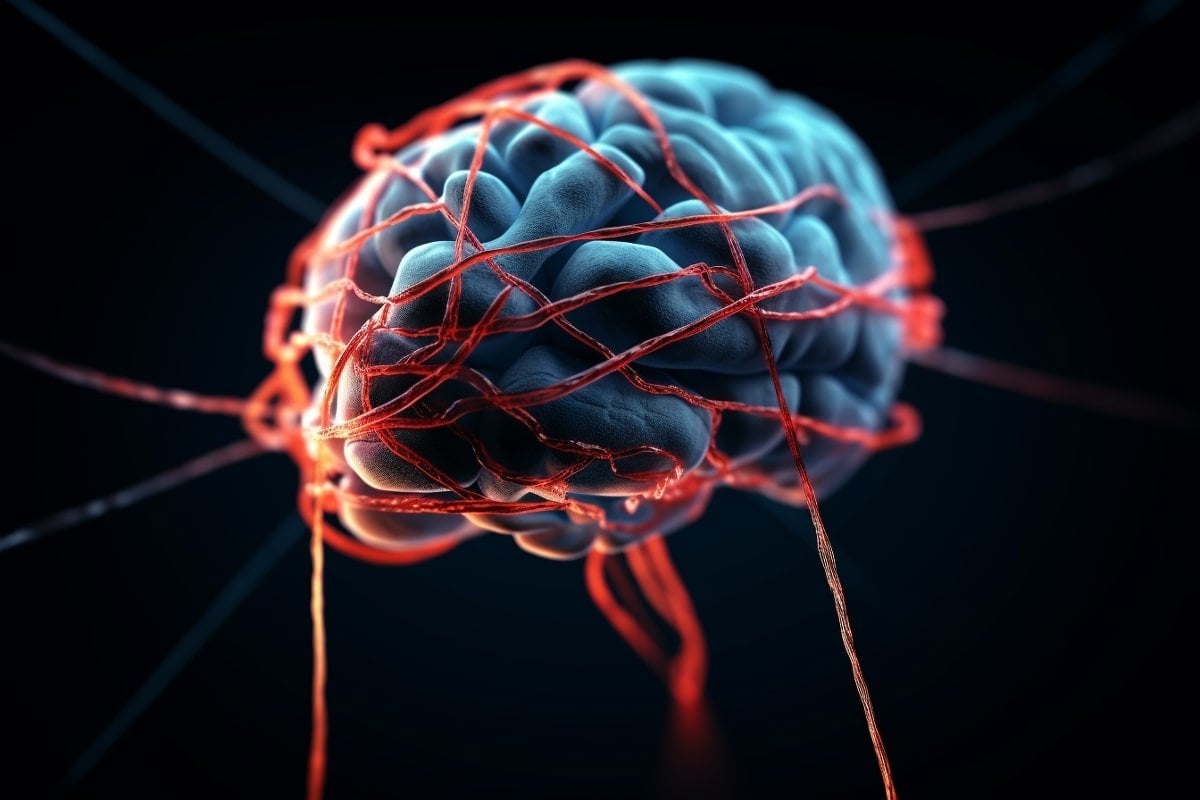Summary: Researchers have identified a potential marker in the brain that might indicate an increased risk of suicide.
They observed that veterans with a history of suicide attempts demonstrated distinct functional connectivity between cognitive control and self-referential thought-processing networks. This connectivity pattern was present both before and after a suicide attempt, making it a potentially crucial indicator of suicide-specific risk.
Further, the study suggests that suicide attempts could lead to brain changes, potentially escalating future suicide risk.
Key Facts:
- The researchers found distinct brain connectivity patterns in veterans with a history of suicide attempts, specifically in networks involved in cognitive control and self-referential thought processing.
- This connectivity pattern was present both before and after a suicide attempt, suggesting it could serve as a novel marker for suicide risk.
- The study also found that a suicide attempt could lead to changes in the brain, specifically in the right amygdala, potentially increasing future suicide risk.
Source: Boston University
Every day in the United States, an average of 130 people take their own lives. In 2021, 12.1 million Americans seriously considered suicide, according to the Centers for Disease Control and Prevention; 3.5 million of them even made a plan.
For the loved ones left behind after a suicide, grief is often clouded with regret and guilt: Why didn’t they know things were so bad? Could they have stopped it?
Although many of suicide’s risk factors are well known—depression, chronic pain, family violence, presence of guns—it’s not always clear why some people, and not others, slip from ideation to planning to attempt.
But new research has uncovered a clue, or marker, in the brain that could be used to identify people at a higher risk of ending their life.

In a paper published in the Journal of Affective Disorders, researchers from Boston University and the VA Boston Healthcare System found important connections in the brain differed among veterans with a history of suicide attempts—even before they tried to end their lives—and those with similar levels of psychiatric symptoms, but without a suicide history.
The differences were in the functional connectivity between brain networks involved in cognitive control (adjusting our behavior or choices to fit a certain task or goal) and self-referential thought processing (reflecting on what we’ve done today or something embarrassing that happened years ago or thinking about what we need to do tomorrow).
“Our study provides evidence that this brain connectivity marker may be identifiable before a suicide attempt, suggesting that it could help identify those at risk for suicide,” says Audreyana Jagger-Rickels, a Boston University Chobanian & Avedisian School of Medicine assistant professor of psychiatry and lead author on the paper.
“This could also lead to new treatments that target these brain regions and their underlying functions.”
To look for indicators of suicide risk in the brain’s inner workings, researchers turned to post-9/11 veterans who’d been exposed to trauma.
Participants were given a resting functional MRI scan, which tracks communication between brain regions and networks when no specific task is being performed—a common way of mapping the brain and how different areas interact.
Researchers then zeroed in on those who reported a suicide attempt at a one- to two-year follow-up assessment, but who had not reported any prior attempts.
They examined brain connectivity before and after the suicide attempt and compared it to a matched control group of veterans with equivalent symptoms of depression and posttraumatic stress disorder (PTSD), but no reported suicide attempts.
The comparison revealed that brain connectivity between cognitive control and self-referential processing networks was dysregulated in veterans in the suicide attempt group, who were all part of a VA Boston Translational Research Center for Traumatic Brain Injury and Stress Disorders (TRACTS) longitudinal study measuring brain, cognitive, physical, and psychological heath.
Critically, this brain connectivity signature was present both before and after the attempt, suggesting that the marker may be a novel suicide-specific risk factor.
Jagger-Rickels says the findings may eventually help clinicians overcome one of the major challenges in suicide risk assessment—its reliance on self-reporting.
“Interventions to reduce suicide risk are limited to people who feel comfortable enough to disclose—self-report—suicidal thoughts and behaviors,” she says.
“Identifying measures that do not require self-disclosure of suicidal thoughts and behaviors may help us identify people who are overlooked, and may also aid in the development of novel treatments targeting the brain mechanisms underlying suicidal thoughts and behaviors.”
The study also indicated that connectivity of the right amygdala, a brain region important for fear learning and trauma, differed between the suicide attempt and the control groups, but only after the reporting of a suicide attempt.
“This suggests that there are brain changes that occur after a suicide attempt, which could be related to the stressors surrounding a suicide attempt or due to the trauma of the suicide attempt itself,” says Jagger-Rickels, who’s also a principal investigator in the National Center for PTSD at the VA Boston Healthcare System.
“This would indicate that suicide attempts themselves impact the brain, which could increase future suicide risk.”
Funding: This research was supported by the Department of Veterans Affairs and the National Institute of Mental Health.
About this neuroscience and suicide research news
Author: Katherine Gianni
Source: Boston University
Contact: Katherine Gianni – Boston University
Image: The image is credited to Neuroscience News
Original Research: Open access.
“Aberrant connectivity in the right amygdala and right middle temporal gyrus before and after a suicide attempt: Examining markers of suicide risk” by Audreyana Jagger-Rickels et al. Journal of Affective Disorders
Abstract
Aberrant connectivity in the right amygdala and right middle temporal gyrus before and after a suicide attempt: Examining markers of suicide risk
Functional neuroimaging has the potential to help identify those at risk for self-injurious thoughts and behaviors, as well as inform neurobiological mechanisms that contribute to suicide.
Based on whole-brain patterns of functional connectivity, our previous work identified right amygdala and right middle temporal gyrus (MTG) connectivity patterns that differentiated Veterans with a history of a suicide attempt (SA) from a Veteran control group.
In this study, we aimed to replicate and extend our previous findings by examining whether this aberrant connectivity was present prior to and after a SA. In a trauma-exposed Veteran sample (92 % male, mean age = 34), we characterized if the right amygdala and right MTG connectivity differed between a psychiatric control sample (n = 56) and an independent sample of Veterans with a history of SA (n = 17), using fMRI data before and after the SA.
Right MTG and amygdala connectivity differed between Veterans with and without a history of SA (replication), while MTG connectivity also distinguished Veterans prior to engaging in a SA (extension). In a second study, neither MTG or amygdala connectivity differed between those with current suicidal ideation (n = 27) relative to matched psychiatric controls (n = 27).
These results indicate a potential stable marker of suicide risk (right MTG connectivity) as well as a potential marker of acute risk of or recent SA (right amygdala connectivity) that are independent of current ideation.







